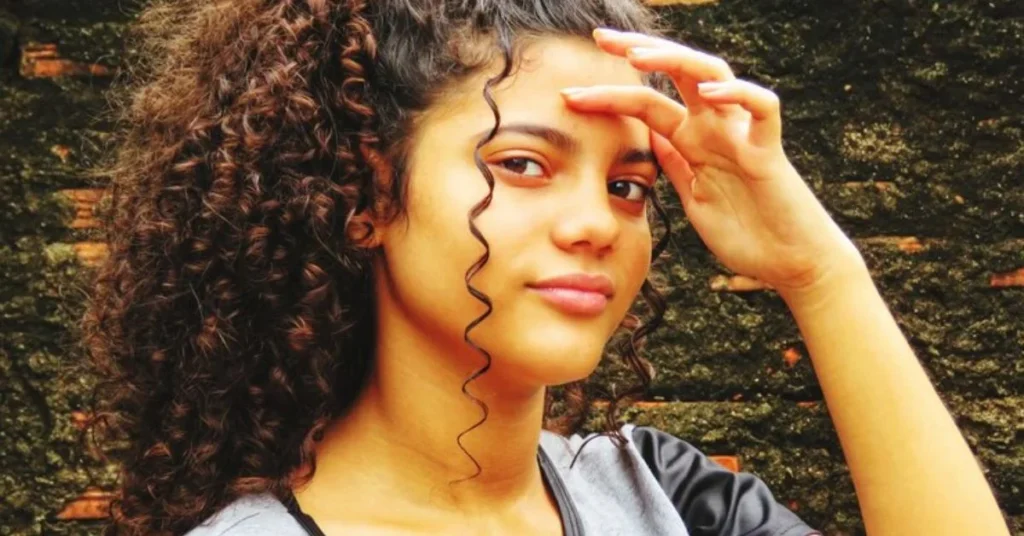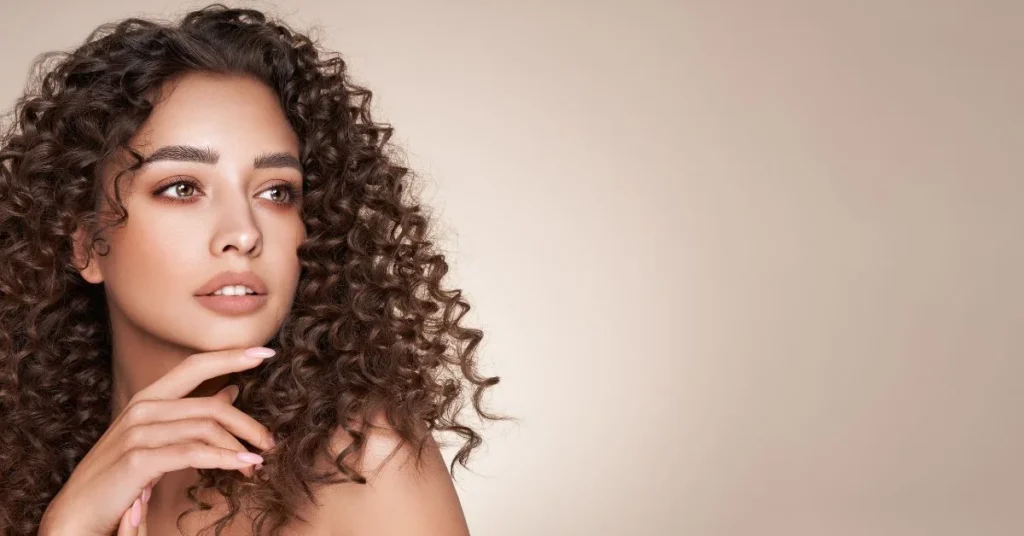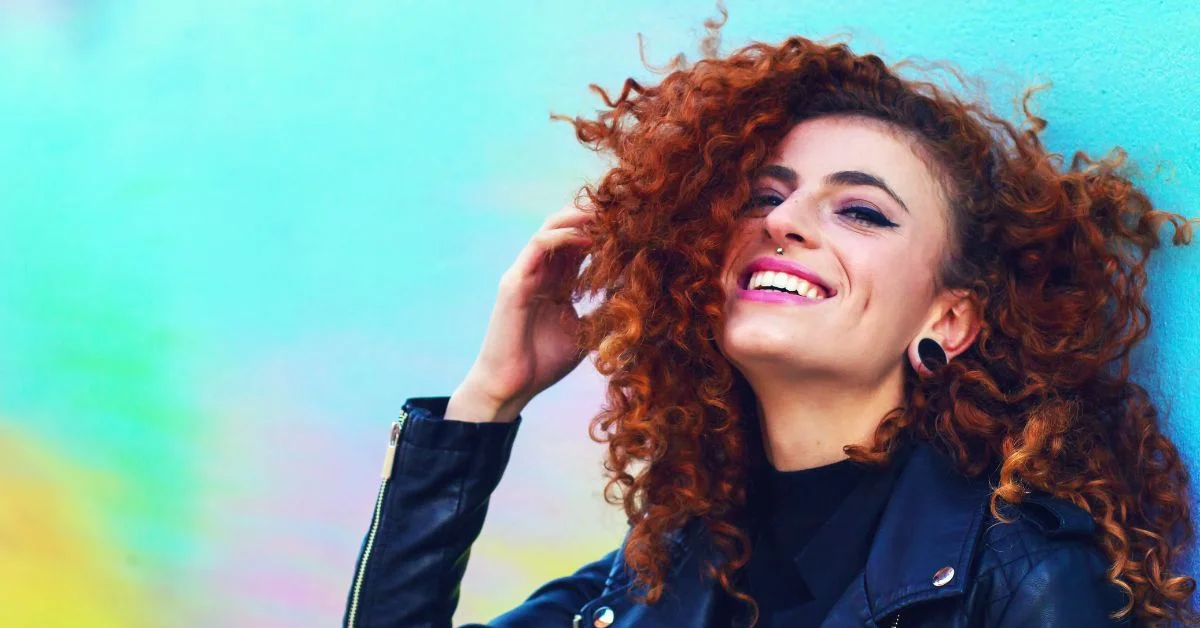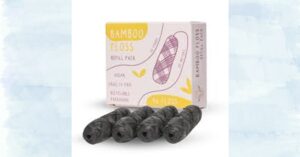Discover the different types of curls, from waves to coils, and learn how to care for and style each curl type for healthy, defined hair. You can’t expect a universal cut for curly hair. Curl types range from loose waves to tight coils, and each one has its own quirks, requirements, and preferred ways of being styled. Curls may look healthy and defined with the correct products, methods, and routines, but only if you know what kind of curls you have.
Find out what kinds of curls are out there, how to determine your individual curl type, and receive some great advice on how to maintain healthy, beautiful curls in this comprehensive guide.
What Are Curl Types?
Curl types are a way to categorize hair based on its pattern, texture, form, and overall appearance. The method, developed by hairdresser Andre Walker, divides hair into four primary kinds (1–4) and subtypes (A–C) according to the degree to which the curl is tight or loose.
Knowing your curl type helps you:
- Choose products tailored to your hair texture
- Learn proper hydration and styling techniques
- Embrace your natural hair with confidence
The Hair Typing System: Types 1 to 4
Here’s a quick overview of the types of Curls:
- Type 1: Straight hair (no curl pattern)
- Type 2: Wavy hair
- Type 3: Curly hair
- Type 4: Coily or kinky hair
Since our focus is on the types of curls, let’s explore Types 2 through 4.
Type 2: Wavy Hair
Wavy hair has a gentle S-shape and sits between straight and curly. It can be soft and fine or thick and coarse.
Type 2A
- Very loose, beachy waves
- Fine texture
- Minimal frizz
- Best with lightweight mousse or sea salt sprays
Type 2B
- More defined S-waves
- Slight frizz, especially at the crown
- Use curl-enhancing creams or gels for better shape
Type 2C
- Thick, coarse waves with defined S-shapes
- Prone to frizz and puffiness
- Loves heavier leave-in conditioners and diffusing
| Curl Type | Pattern Description | Texture | Common Concerns | Recommended Products |
|---|---|---|---|---|
| 2A | Loose, beachy waves | Fine, flat | Lack of volume, limp strands | Sea salt spray, volumizing mousse |
| 2B | Defined S-shape waves | Medium | Frizz, uneven wave pattern | Lightweight curl creams, gels |
| 2C | Thick, coarse waves | Coarse, dense | Puffiness, frizz, dryness | Leave-in conditioner, diffusing spray |
| 3A | Loose, spiral curls | Fine to medium | Frizz, lack of definition in humidity | Light gel, curl-defining cream |
| 3B | Springy, voluminous curls | Medium to coarse | Frizz, dryness | Curl butters, anti-frizz serum |
| 3C | Tight, corkscrew curls | Coarse, thick | Dryness, shrinkage | Deep conditioner, curl custard |
| 4A | Soft, S-shaped coils | Dense, soft | Dryness, breakage | Cream-based moisturizers, detangling spray |
| 4B | Z-shaped, fluffy coils | Very dense | Shrinkage, lack of curl definition | Hydrating creams, natural oils |
| 4C | Tightest coils with minimal definition | Thick, fragile | High shrinkage, breakage, dryness | Heavy oils (castor, shea), protective styling creams |
Type 3: Curly Hair
3rd types of Curls are springy and defined. They range from loose ringlets to tight corkscrews.
Type 3A
- Loose, shiny curls about the size of sidewalk chalk
- Frizz can be an issue in humidity
- Use light gels and curl creams
Type 3B
- Tighter curls, often with more volume
- Medium to coarse texture
- Benefit from curl butters and anti-frizz serums
Type 3C
- Corkscrew curls, densely packed
- Thick, voluminous, and prone to dryness
- Deep conditioning is key

Type 4: Coily Hair
This hair type features tight curls or z-shaped patterns that shrink significantly when dry. It’s naturally voluminous and the most fragile.
Type 4A
- Soft, tight coils with visible S-patterns
- Retains moisture better than 4B or 4C
- Use cream-based products and gentle detangling
Type 4B
- Z-shaped coils with sharp angles
- Fluffy texture, less defined curl
- Requires rich, hydrating creams and oils
Type 4C
- Tightest coil with almost no visible curl definition
- High shrinkage and fragile
- Needs heavy moisturizing and protective styling
How to Identify Your Curl Type
Not sure where you fall on the curl spectrum? Try this:
- Wash your hair and let it air-dry without products.
- Examine the curl pattern.
- Is it loose and wavy? You might be Type 2.
- Are your curls bouncy and springy? Likely Type 3.
- Tight coils or zig-zags? You’re in the Type 4 range.
Pro Tip: You might have more than one curl type on your head — that’s totally normal!
Best Products for Each Types of Curls
Choosing the right product can make or break your curls.
| Curl Type | Must-Have Product | Why It Works |
| 2A | Sea Salt Spray | Enhances natural wave without weight |
| 2C | Leave-In Cream | Helps manage frizz and define |
| 3B | Curl Butter | Adds moisture and definition |
| 4A | Creamy Moisturizer | Prevents dryness, enhances softness |
| 4C | Heavy Oils (e.g. castor, shea) | Locks in hydration and prevents breakage |
Styling Tips for Defined, Healthy Curls
- Plop or Microfiber Towels: Prevent frizz and boost curl definition.
- Use a Diffuser: Helps set curls while reducing heat damage.
- Avoid Sulfates & Silicones: They dry out and weigh down curls.
- Sleep with a Silk Bonnet or Pillowcase: Reduces friction and breakage.
- Refresh with a Spray Bottle: A mix of water and leave-in conditioner can revive curls between washes.

Conclusion: Types of Curls
To fully embrace your hair’s natural texture and discover its potential, it’s important to understand the different types of curls. Curls can be lively, healthy, and defined with the right approach and product, whether you wear loose waves or tight coils.
FAQ: Types of Curls
Q: Can I change my curl type?
A: Your curl pattern is genetic, but heat damage or chemical treatments can alter its appearance. Healthy habits may restore your natural curl.
Q: What if I have multiple curl types?
A: Totally normal! Many people have a blend of curl types. Focus on the dominant type and adjust care for different areas as needed.
Q: Are curl types different for men and women?
A: Curl types apply universally — men, women, and nonbinary individuals can all have Type 2 to 4 curls.
Q: How often should curly hair be washed?
A: Usually once a week or as needed. Curly hair needs natural oils, so overwashing can cause dryness.









